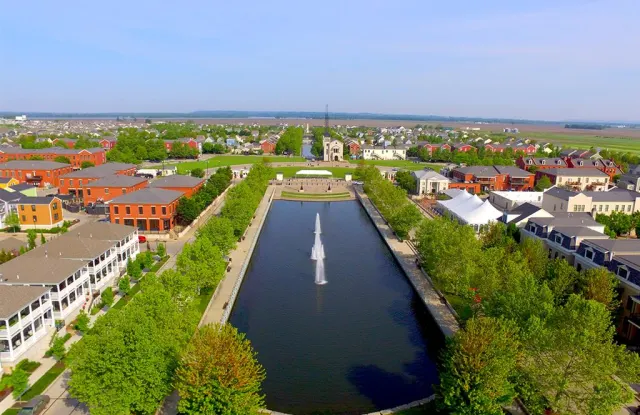When it comes to upgrading your garage in St. Charles, the question often arises: epoxy flooring vs. floor paint—which one actually gets the job done? Both are popular options for homeowners wanting to take their concrete from dull and dusty to something a little more polished. But the similarities mostly end there.
If you’re weighing the pros and cons, you’re in the right place. We’re about to break down the key differences between epoxy coatings and standard floor paint, so you can make the best decision for your garage (and your wallet). And when you’re ready to move beyond the decision phase, STL Coatings is your go-to local team for top-notch epoxy installations in St. Charles.
What Is Floor Paint?
Let’s start with the basics. Floor paint is usually a latex or oil-based coating specifically designed for concrete surfaces. It’s marketed as a quick, easy way to freshen up a garage floor, cover minor stains, and protect against light wear.
Sounds good, right? Well, not so fast.
Floor paint sits on top of the concrete and doesn’t form a strong chemical bond. While it looks decent initially, it’s often short-lived—especially in high-traffic or high-impact areas like garages. If your car pulls in wet or your toddler turns your garage into a tricycle track, that paint is going to peel faster than a cheap sticker in summer heat.
What Is Epoxy Flooring?
Epoxy is a two-part resin system that chemically bonds to the concrete surface. When applied correctly, it creates a hard, glossy, seamless surface that’s both highly durable and good-looking. Epoxy is designed to take a beating—oil leaks, heavy vehicles, dropped tools—you name it.
Professional-grade epoxy systems also include surface prep, base coats, and topcoats with optional slip-resistant additives. It’s not a simple one-and-done job, but it’s built to last.

Durability: Which One Holds Up?
Floor Paint:
- Lasts 1–2 years in ideal conditions
- Peels easily from hot tires, moisture, or poor prep
- Prone to scratching and staining
Epoxy Flooring:
- Lasts 10–15 years or longer with proper care
- Resistant to chemicals, tire marks, oil spills, and impact
- Doesn’t peel, chip, or flake like paint
Winner: Epoxy flooring, by a landslide.
Maintenance and Cleaning
Floor Paint:
- Requires regular touch-ups
- Scratches easily, especially with equipment or storage use
- Stains often become permanent
Epoxy Flooring:
- Simple sweep or mop does the trick
- Resistant to grime, salt, and just about anything else your garage floor meets
- Optional topcoats can enhance stain resistance and shine
Winner: Epoxy, for making your weekend cleanup a little less… weekend-consuming.
Cost Comparison
Floor Paint:
- DIY kits cost $0.50–$2 per square foot
- Appears budget-friendly but requires frequent reapplication
Epoxy Flooring:
- Professional installation ranges from $3–$12 per square foot
- Higher upfront cost but longer lifespan means less long-term spending
Winner: Epoxy again—for long-term value, even if the initial bill is steeper.
Aesthetic Appeal
Floor Paint:
- Comes in basic colors
- Finish is often flat or satin
- Shows imperfections in concrete
Epoxy Flooring:
- Can be customized with flakes, metallic finishes, or even logos
- Hides imperfections well
- Offers high-gloss or matte finishes for a sleek, modern look
Winner: Epoxy. It’s not just functional—it looks sharp.
Installation Time and Effort
Floor Paint:
- Can be rolled on in a few hours
- Needs 24+ hours to cure before light use
- Peels easily if prep is skipped or rushed
Epoxy Flooring:
- Requires concrete grinding or etching, multiple layers, and proper curing
- Usually takes 2–3 days for professional application
Winner: Floor paint wins for speed, but epoxy takes the trophy for results that last.
Safety and Slip Resistance
Floor Paint:
- Can be slippery when wet
- Some versions have built-in texture, but it wears down quickly
Epoxy Flooring:
- Anti-slip additives available
- Creates a safer environment, especially in wet or icy conditions
Winner: Epoxy—because no one wants to slip carrying groceries.
Where They Fit Best
Floor Paint:
- Budget makeovers
- Low-traffic garages
- Temporary refreshes before selling a home
Epoxy Flooring:
- High-traffic garages or workshops
- Car enthusiasts who want showroom shine
- Long-term homeowners who want value and durability

A Bit of St. Charles Flavor
Now, if you’re the kind of person who enjoys the history and character of a place like The Lewis & Clark Boathouse and Museum in St. Charles, you understand the value of solid construction that tells a story. Just like that replica keelboat was built to endure the Mississippi, epoxy flooring is built to handle the ups and downs of daily life without crumbling under pressure.
Much like Lewis and Clark didn’t set off with a canoe and a prayer, you don’t want to tackle your garage floor with a brush and hope. Epoxy is your well-prepared expedition into flooring that actually performs.
Final Thoughts
If your goal is long-term durability, aesthetics, and minimal maintenance, epoxy flooring is the clear winner for your St. Charles garage. Floor paint has its place—it’s quick and cheap—but it’s also temporary.
The real question isn’t epoxy flooring vs. floor paint—it’s whether you want to redo your garage again in two years or enjoy a smooth, stain-resistant floor that holds up for the long haul.
When you’re ready to take your garage to the next level, STL Coatings is here to help you do it right the first time.
Because a garage isn’t just a place to park—it’s part of your home. And it deserves a foundation as reliable as the city it’s built in.
